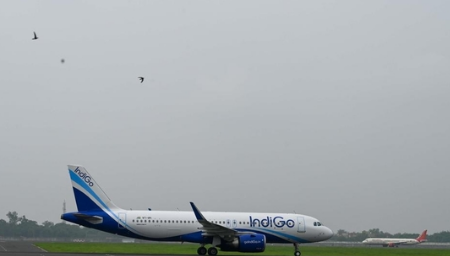
In a move that will impact thousands of travelers, Delhi’s Indira Gandhi International Airport is shutting down one of its main runways for repair and maintenance. This temporary closure is expected to affect around 200 flights every day, causing potential delays and rescheduling across domestic and international airlines.
The runway closure is a part of scheduled maintenance aimed at improving airport safety, efficiency, and infrastructure longevity. However, during this time, passengers can expect increased waiting times, flight delays, and possible cancellations.
According to officials from the Delhi International Airport Limited (DIAL), the runway is being closed for essential repair work and re-carpeting. This kind of maintenance is crucial to ensure the safe landing and take-off of aircraft. Over time, runway surfaces wear out due to heavy aircraft movement, exposure to weather, and constant use.
DIAL clarified that the runway closure was planned in advance, and all airlines were informed beforehand to prepare alternate schedules and reduce the impact on passengers. The closure began in early June 2025 and is expected to continue for around two months, depending on weather conditions and construction progress.
Delhi airport has three runways: Runway 09/27, Runway 11R/29L, and Runway 10/28. The one being closed is Runway 10/28, which is also one of the busiest runways at the airport. This runway handles a significant portion of the daily air traffic. With it shut down, the remaining two runways will have to absorb the entire traffic load, resulting in overburdening and potential delays.
The impact of the runway closure is expected to be substantial. Around 200 flights (including both arrivals and departures) may face delays, rescheduling, or even cancellations. Peak hour congestion will increase as airlines try to operate within limited time slots. Domestic flights will be affected more than international ones, as the airport might prioritize long-haul and international operations. Airlines like IndiGo, Air India, Vistara, and SpiceJet have already issued advisories to passengers. The Air Traffic Control (ATC) and airport management are working closely with airlines to manage slot allocation, reduce waiting times, and maintain safety standards.
If you are planning to travel via Delhi airport during June or July 2025, here are a few things to expect: Flight delays of 30 minutes to 2 hours, changes in boarding gates, longer waiting times at security and check-in counters, and the possibility of rescheduled flights or temporary cancellations. Passengers are advised to stay updated by checking their flight status regularly, arriving at the airport well in advance, and keeping communication open with their airlines.
The Ministry of Civil Aviation and airport authorities have assured the public that all efforts are being made to minimize the inconvenience. A spokesperson from DIAL said, “We understand that the closure of one runway will impact flight schedules, but this is a planned activity necessary for upgrading airport safety and improving the passenger experience in the long run.”
The Directorate General of Civil Aviation (DGCA) is also monitoring the situation closely to ensure that airlines maintain passenger rights and provide timely updates.
Runway maintenance is a crucial part of airport operations. Just like roads and bridges, runways too require periodic inspection and repair to remain safe. With over 1,200 flight movements daily, Delhi airport is one of the busiest in the country and demands a high level of infrastructure upkeep. By temporarily closing the runway and carrying out re-carpeting, authorities are investing in long-term operational safety. Neglecting this could lead to serious incidents like aircraft tire bursts or slippery landings, especially during the monsoon season.
Several airlines are expected to make adjustments to their schedules, which could cause inconvenience for travelers. During the closure period, airline costs may increase due to longer flying times, re-routing, and congestion charges. This could also lead to higher ticket prices, especially during weekends and peak hours. Travelers should book tickets in advance and look out for airline notifications regarding timing changes.
Delhi airport is using this period to test its emergency response systems and load-handling capacity. The airport is deploying extra staff during peak hours, managing ground handling operations more efficiently, and coordinating closely with airlines, immigration, and security forces. They have also introduced new digital signage, real-time display boards, and AI-driven software to help monitor and control flight congestion.
The Indira Gandhi International Airport in Delhi is not just any airport. It is India’s busiest and most important aviation hub. It is also a major transit point for international flights to Europe, the US, and Southeast Asia, and a key player in India’s civil aviation growth, handling over 70 million passengers annually. Any disruption at Delhi airport has a domino effect on the national flight grid, affecting flights in Mumbai, Bengaluru, Hyderabad, and even smaller cities like Lucknow and Chandigarh.
As per the current announcement, the runway closure will last for nearly 2 months, starting from early June 2025. However, this timeline may change depending on weather conditions, construction material availability, and workforce efficiency. Passengers are requested to follow official updates for any changes in the timeline.
The runway closure at Delhi airport is a necessary but challenging step in improving the airport’s safety and efficiency. While it is likely to affect around 200 flights daily, with delays, cancellations, and rescheduling, the long-term benefits will ensure smoother operations in the future. Travelers should plan smartly, stay informed, and be patient during this time. With timely cooperation between airlines, airport authorities, and passengers, the inconvenience can be managed well.


































